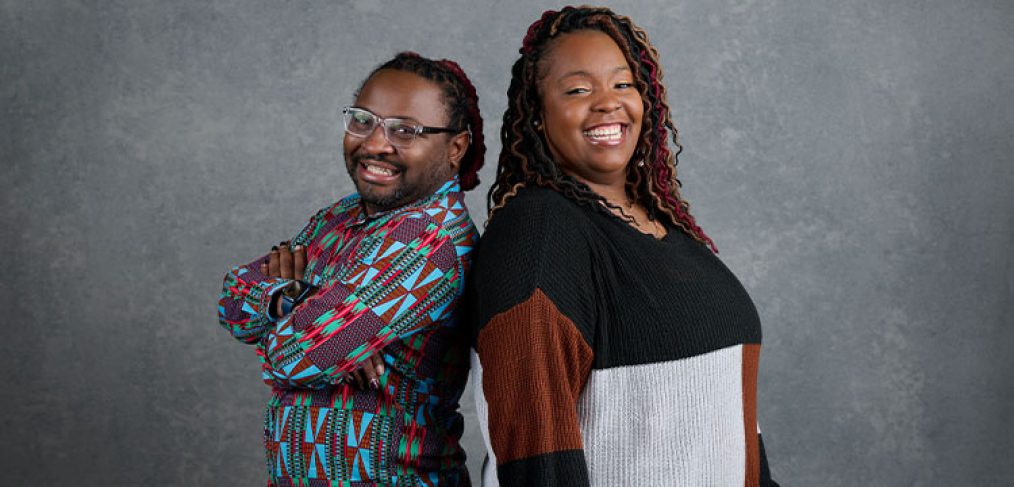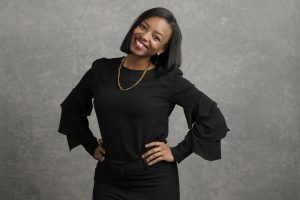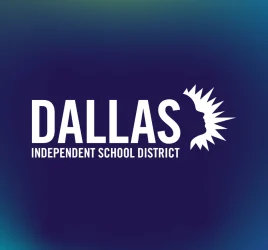
Celebrating Black history through dance
In the 2020-2021 school year, a group of dance teachers filled a gap in the dance curriculum not just for Dallas ISD students but students throughout the state when the Dance Appreciation: African American and Mexican Folkloric Studies course they created was approved by the Texas Education Agency for the entire state of Texas.
 Dallas ISD dance educators Devondria Douglas, Alexandria Morris, Quan Powers and Daniel Negrete knew there was a need for a dance course in which students could more easily see themselves and their cultural heritage. The original push for the course came about when Quan Powers, dance director at H. Grady Spruce High School, had an idea to bring equitable practices into dance education in the district. After countless hours of work, zoom calls, research, and collaborations, their efforts came to fruition when it was approved.
Dallas ISD dance educators Devondria Douglas, Alexandria Morris, Quan Powers and Daniel Negrete knew there was a need for a dance course in which students could more easily see themselves and their cultural heritage. The original push for the course came about when Quan Powers, dance director at H. Grady Spruce High School, had an idea to bring equitable practices into dance education in the district. After countless hours of work, zoom calls, research, and collaborations, their efforts came to fruition when it was approved.
“I was having a conversation with Rachel Harrah, our former director, and I was looking through the courses as to what we had to offer as dance,” Power said. “Going into these dance spaces with our black and brown students, I noticed that they really didn’t see themselves in those spaces.”
Powers then asked Harrah what it would take to create a dance appreciation course that focused on African American and Mexican Folkloric dance. He got the green light to pursue the course.
“Quan literally called us and said he had this really crazy idea to create this course, “ said Devondria Douglas, who was the dance director at North Dallas High School at the time but has since been promoted to manager of the Dallas ISD Dance Department. “In dance we realized that the way our TEKS are set up, we really don’t have a lot of room to do cultural dance, and even if we do, it’s very surface level. Our kids don’t get to experience a full cultural ambiance of what dance is, especially from a cultural, social dance standpoint.”
Alexandria Morris, dance director at W.W. Samuell High School agreed that students were missing this aspect in the dance curriculum.
“We saw a need that wasn’t being addressed in the classroom,” she said. “Devondria and I went to [Texas Woman’s University] together, so we saw the lack of representation of African American dance and how it influenced a lot of things. This conversation came about during COVID, and we had time to talk about it, so we decided to write this course.”
And so Douglas, Morris, and Powers began to write the course on African American Dance Appreciation while Daniel Negrete, dance director at Emmett J. Conrad High School, was the lead writer on the Mexican Folkloric Studies course.
Q&A with Douglas, Morris and Powers
Why is this course important to you and your students?
Douglas: I always say dancers are social preservationists. It is our job to record history through movement. In African American dance specifically, there was a time when our bodies were our only instrument. And I think when we are making those connections for those kids, you see pride and an increase of awareness, which is what I saw when I taught the course for the first year, when I was at North Dallas High School. Students learned that they are more than what they’re taught in history books.
Morris: Dance is very much a part of our history and culture. At first, Devondria and I wanted to tell the whole story, but decided it was too ambitious for a semester. So we focused on dance in the 1400s to the1800s, from the 1800s to the Civil War, the Civil War to the Jim Crow era, and from that era until now. Students need to know the history that encompasses the social aspects and demographics, and why we needed dance to survive. They learn how things have changed from there to now and how we’re wanting to progress and push the advocacy and African American influences in the dance community.
Powers: As I was looking through dance history, I realized there was no trace of black and brown people in dance. There’s no history, because our history is very oral. It’s not written down. I wanted my kids to see themselves in the fabric of dance. I didn’t want it to be when you hear about Bill Bojangles Robinson or Debbie Allen, that there would be no written history taught about these important figures and their contributions. So it’s one of the main reasons this course came about.
How has the African American Dance Appreciation course impacted you and your students?
Douglas: Our kids are now able to go into these codified dance spaces, these colonized dance spaces, and they’re able to correct a lot of the wrong written history. One of the hardest things about writing this course was that a lot of our history is oral and we’re so used to education in a textbook. One of the takeaways from this is that you don’t just have adults advocating to adults. Now you have kids that are telling you what they need as learners. A lot of our kids have gone to say ‘this history is not correct and where you think it comes from also is not correct.’ They’re confident to make those corrections out loud. I think that has been a huge improvement with our dancers in the district.
Morris: I’ve noticed that students now understand and say ‘oh that’s why you do it this way.’ I have real talks with my students and I definitely let them know that in our culture it’s the norm. I feel like it’s an even exchange of culture, and they can teach me just like I can teach them. I’m probably the only black educator in fine arts that they will probably see in a while, so for me to be able to have that platform is very rewarding. Dance instills pride and culture in oneself and you can stand tall knowing that you come from this rich culture.
Powers: It’s impacted me personally as well as my students. I feel like we’ve created a safe space for students through dance and through this course. Students are able to identify and see themselves in this work. I always wanted to create a space that I didn’t have when I was growing up. I never want a kid to walk through my door and say ‘I was never given an opportunity to shine.’ We’re all one big family. I want the kids to understand that regardless if dance is going to be the thing you do for the rest of your life or just a hobby, you’ve had the experience to be an artist, to be a choreographer, to be a dancer and to learn your history through dance. Not only are we changing lives here in the district through this course, we are changing lives statewide.
How does the district’s Black History Month theme of Black Resilience resonate with you?
Douglas: It means taking our narrative into our own hands.We get to finally speak for us, and we don’t have to have anybody else at the table, but us. I think through this work specifically, it’s showing that black is okay in every space. Black is beautiful in every space. Like I always say, my magic is sacred. And I get to choose where to put my magic, and I don’t have to be told where to use it. I finally am in a space, in a world where my voice is recognized, my experiences are valued. Being black, and being resilient is saying no to boxes. I tell people you can’t put me in a box. I’m going to take a step and I’m going to keep going.
Morris: I am resilient. I had to put on my thick skin and focus on my end goal ever since I was a Dallas ISD student. I’m thankful for the village and the support that I had.I had my son at a young age and I had to be mentally ready for everything. I had to navigate having a kid, going to school, having a job – and through that, it made me wiser and I am now able to help my students. I’m the epitome of black resilience, and I tell my students that no matter what happens to them, they can overcome adversities and challenges and be whoever they want to be in life.
Powers: We are resilient, because no matter what has happened, black people always seem to rise, through the good, bad or ugly. Black people find the sunlight in it and stand in it. They find the great things that happen and they rise. It’s never one of those things where I’m going to let others define me. We don’t let events define us at all. We give it the definition.
America has been built on black people’s backs. Whatever has been accomplished, wouldn’t have been accomplished without black people, which includes dance. Without the Debbie Allens, the Alvin Aileys, the Misty Copelands, there would be no dance.



